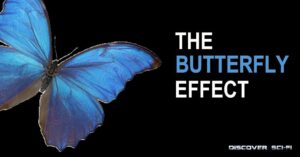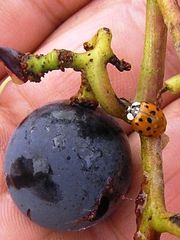
The Butterfly Effect: The scientific theory that a single occurrence, no matter how small, can change the course of the universe forever. As a scientist by education, I believe in this phenomena. Newton’s third law states that for every action there is an equal and opposite reaction. And a less scientific, but sadly often true, Murphy’s Law says if something bad can happen, it will. So what does this have to do with this blog? Very simply, you can not introduce a new organism into an environment and expect nothing to happen.
Enter the multicolored Asian lady beetle (MALB.) Scientifically known as Harmonia axyridis, is a predatory lady beetle native to eastern Asia. Yes, they are cute and most everyone loves them. There is even the belief that they are good luck if found in your home.
MALB was intentionally released on several different occasions for biological control of aphids during the 1960s – 1990s. They are an effective natural control but unfortunately, similar to Canadian Geese, they liked their new environment and they have rapidly spread to cover much of the United States and several parts of Canada.
Although it has been proven that MALB provides a positive biological effect on the aphid control of pecans soybeans, it has had a negative effect on the wine industry.
Sadly, MALB have found a home in the vineyard, impacting the wine industry in northern US and Canada. They tend to migrate to the grapes about two weeks prior to harvest. Once MALB has incorporated themselves into the vineyard it is extremely difficult to get rid of them.

During harvest they can be crushed with the grapes adding to the MOG (material other than grape) leading to an off flavor in the wine. When agitated or squashed, MALB go through a defensive mechanism known as “reflex bleeding” in which they emit a yellow liquid from their leg joints with an unpleasant odor. It is such an offensive odor that natural predators such as birds do not eat them. This “bleeding” has an impact on the sensory analysis of the wine. Studies have shown that MALB taint lead to a lower floral and fruity aroma while increasing the musty and earthy bouquet. Additionally, an increase in green pepper and sourness has been identified.
Since it is an arduous task to remove them from the clusters during harvest, management of MALB depends mostly on maintaining the integrity of the grape berry from injury. MALB tends to attack damaged berries. Berries that have split due to rapid water intake or other animal damage are most susceptible. If they are present at harvest, the beetles must be removed by shaking the clusters and covering bins of already harvested fruit. Two other options are floating the clusters in water or vacuuming the clusters. As you can imagine, this adds a lot of additional man hours elevating labor costs while also increasing the time between harvest and processing. This extra time can lead to microbial development, oxidation and flavor loss.
Research has shown that it takes very few MALB to produce a noticeable fault in wine, known as ladybug taint (LBT.) Casual wine drinkers have noticed the taint at an average of one MALB per pound of grapes, while connoseiurs can recognize the fault at 2 MALB per 30 pounds of grapes. Certain varietals such as Chardonnay have a lower threshold than more floral varietals such as Riesling. Practices have been studied to remove LBT from wine, but none have proven to be effective. Making matters worse, the compound in the “reflex bleeding” is extremely stable and it does not breakdown in the wine as it ages. How much will these little insects cost the wine industry,? Time will only tell but in the meantime, enjoy this funny Nationwide Insurance commercial that demonstrates the Butterfly Effect.
~Slainte!
